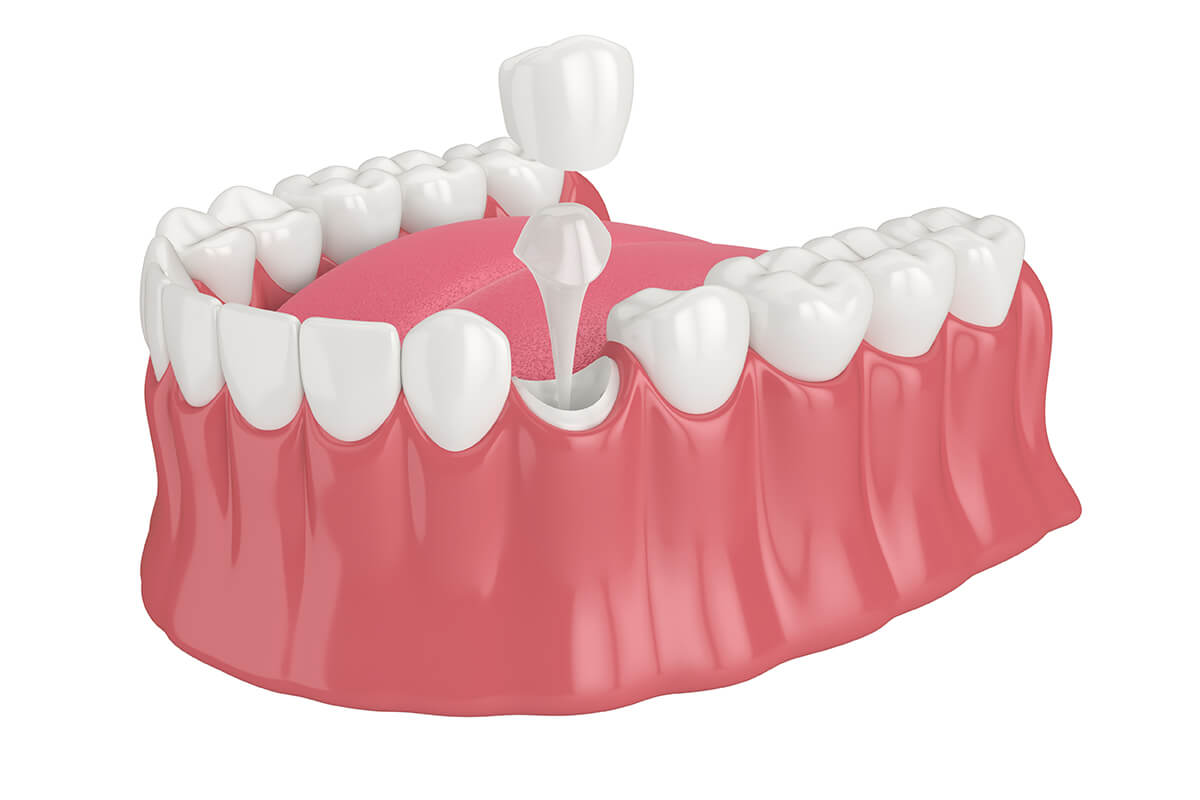Dental Crowns and Bridges
Our dental professionals at North Aurora Smiles may recommend to patients in North Aurora, IL, who are faced with tooth replacement or protection to consider the benefits of dental crowns and bridges. Dental bridges and crowns are common dental restorations used by our team to restore the smile when tooth loss or tooth damage has occurred. Read on to learn more about the benefits of these dental repairs available at our facility.
What is a dental crown?
A dental crown, or “tooth cap,” is a restoration made of porcelain to restore a patient’s tooth. A tooth that might benefit from a dental crown often has:
- Extensive damage to the natural tooth enamel
- Large fillings due to significant tooth decay
- Recently undergone root canal therapy
- Replaced a missing tooth with a dental implant
Dental crowns are made to cover the entire visible portion of the tooth. To place a dental crown, patients will visit their dentist to have a custom tooth preparation taking into consideration old fillings, decay, and cracks. At this time, a digital scan or impression is completed and sent to a dental laboratory where a ceramist will create the dental crown based on the dentist’s specifications. The final restoration is bonded over the natural tooth and can last many years with proper maintenance.
What is a dental bridge?
A dental bridge is different from a dental crown. The bridge is used to replace one or more teeth lost within a specific area. This restoration is made of porcelain and includes false teeth fused to dental crowns on each side. The crowns are used to bond over the adjacent teeth to support the false tooth or teeth and restore the smile’s function and beauty. The dental bridge is not removable and can last a decade or longer.
Do you need teeth replacement?
Whether you are considering a dental bridge or “tooth caps,” we welcome you to schedule an appointment to discuss your options with Drs. Hammad Aziz and Stephanie Janes at North Aurora Smiles. Connect with our team by calling (630) 984-2223 and visiting us at 601 Randall Crossing Lane. North Aurora, IL area patients, and individuals in surrounding cities, including Cortland, Big Rock, and Batavia, are invited to learn about teeth replacement options available at our state-of-the-art dental facility.
Frequently Asked Questions
A dental crown, sometimes known as a “tooth cap,” is a porcelain restoration used to reconstruct a patient’s teeth.
A patient that might benefit from a dental crown usually has considerable damage to the natural tooth enamel, has got big fillings from significant tooth decay, has recently received root canal therapy, or has replaced a lost tooth with a dental implant.
No. Your mouth will be numbed throughout the crown procedure to ensure that you do not experience any discomfort while your tooth is prepared to create room for your crown.
After completing a digital scan or impression, the dental crown is sent to a dental laboratory, where a ceramist will manufacture the dental crown based on the dentist’s instructions. The final restoration is bonded over the natural tooth and, with good care, can endure for many years.
Porcelain crowns typically last at least 10 years with good care and maintenance, and crowns that last 15 years or more are not unusual.




